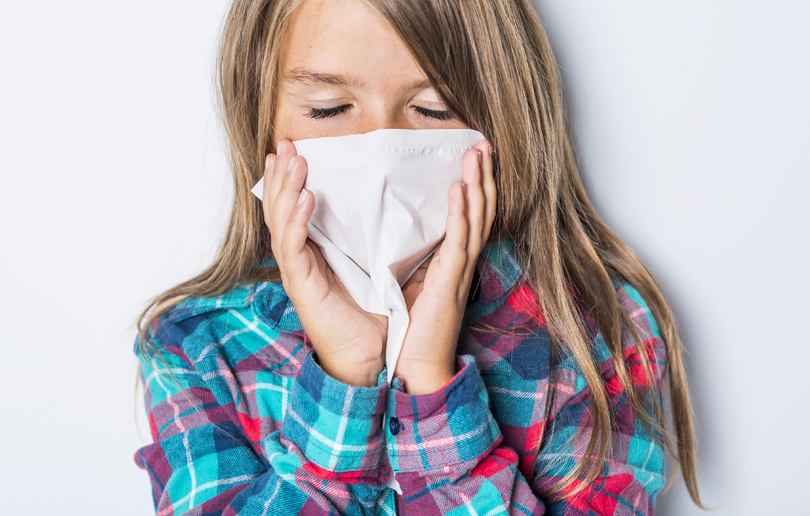Parents beware: eight common allergy-causing foods
There eight common allergy-causing foods that cause around 90% of all food allergy reactions. These are the ones to watch

Milk
Lactose intolerance should not be confused with a milk allergy, as they are two different things. Lactose intolerance is when the body cannot digest lactose, the sugar found in dairy products.
You’ll often get symptoms such as stomach pain, gas, and diarrhoea. With a milk allergy, the symptoms affect more than just your digestive tract. A milk allergy is when your immune system thinks dairy is a foreign invader and attacks it by releasing chemicals called histamines. Symptoms can range from wheezing problems to vomiting and diarrhoea.
Eggs
Eggs are in so many foods. When you’re allergic to them, you need to know what to look for on food labels and what you can use instead when you cook or bake.
Most people with egg allergies react to the egg whites, not the yolk. To be safe, don’t eat either part. Even if you separate them, the yolk is likely to have some of the white’s proteins in it.
Also avoid eggs in other forms, such as:
- Egg powder
- Dried eggs
- Egg solids
Peanuts
Even a little bit that you swallow or inhale could cause an allergic reaction. You know to avoid the obvious foods, such as almond butter, cookies with walnuts baked in, or oatmeal studded with pistachios. But other trigger foods, including sauces and gravies, are more surprising. You need to know what to look for, so you can check before you buy or use a product.
Not Just Peanuts
Peanuts and tree nuts aren’t the same. But if you’re allergic to one, you may also need to avoid the other. Ask your doctor to be sure.
Soy
If all you needed to do for a soy allergy was skip the soy sauce and tofu, life would be easy. But soybeans are a big part of processed foods, too.These are the foods to familiarise yourself with to protect yourself or your child from an allergic reaction.
Soy Foods to Stay Away From
- Edamame
- Miso
- Natto
- Soy sauce and shoyu sauce
- Soy-based fibre, flour, grits, nuts, or sprouts
- Soy-based milk, yogurt, ice cream, or cheese
- Soy protein
- Tamari
- Tempeh
- Textured vegetable protein (TVP)
- Tofu
Foods That May Contain Soy
- Baked goods (breads, cookies, and crackers)
- Canned broth and soup
- Canned tuna and meat
- Cereals
- High-protein energy bars and snacks
- Infant formula
- Low-fat peanut butter
- Processed meats, like deli meats
- Vegetable oil
- Worcestershire sauce
Almost any food can trigger an allergy, though. Less common ones include:
- Corn
- Seeds, often sesame, sunflower, and poppy
- Spices, such as caraway, coriander, garlic, and mustard
- Wheat and other grains with gluten, including barley, rye, and oats
- Fish (mostly in adults)
- Shellfish (mostly in adults)
Food Allergy Symptoms
An allergic reaction can happen within minutes of eating, or it may happen hours later.
Mild symptoms can be hard to tie to specific foods. You could get:
- Red, swollen, dry, or itchy skin rash (hives or eczema)
- Runny or stuffy nose, sneezing, or a slight, dry cough
- Itchy, watery, red eyes
- Itchy mouth or inside your ear
- Funny taste in your mouth
- Upset stomach, cramps, throwing up, or diarrhoea
Most often, peanuts, nuts, fish, and shellfish cause severe reactions, although any food can.
Symptoms include:
- Trouble breathing or swallowing
- Swollen lips, tongue, or throat
- Feeling weak, confused, or light-headed, or passing out
- Chest pain or a weak, uneven heartbeat
Because young children may not know how to describe what’s happening, they might say something like, ‘My mouth is tingling,’ ‘My tongue feels heavy,’ or ‘I’ve got a frog in my throat.’ A hoarse or squeaky voice or slurring words are also signs of an allergic reaction in kids.
Sometimes symptoms affect your whole body and are so serious that they’re life-threatening. This kind of reaction is called anaphylaxis, and it’s a medical emergency. It usually happens a few minutes after you’ve eaten. If you have asthma as well as a food allergy, you’re more likely to have anaphylaxis.
When you have a severe food allergy, you should carry injectable epinephrine (adrenaline) in case you have a reaction. It can ease symptoms until you can get medical attention. Do not hesitate to use the epinephrine auto-injector ever if you are unsure your symptoms are caused by an allergy. The epinephrine will not hurt you and could save your life.
For highly allergic people, even tiny amounts of a food (for example, 1/44,000 of a peanut kernel) can set off a reaction. Less sensitive people may be able to eat small amounts of their trigger food.
Hidden Triggers
The key to controlling a food allergy? Avoid the problem food. That isn’t always easy, though. It may be hidden as an ingredient in something else. Consider these points:
- Most baked goods, like cakes and cookies, are made with eggs and sometimes nuts.
- Water-packed tuna may have added non-fat dry milk.
- Salad dressing could be made with soybean oil.
- A hot dog may contain milk protein.
So, be sure to read food labels! Still, labels don’t always tell the whole story. For example, pineapple, milk casein, or hydrolysed soy protein may be used in microwave popcorn – yet you won’t see them on the ingredient list. You’ll see the catch-all terms ‘flavouring’ or ‘natural flavouring’ instead. Words like ‘emulsifier’ or ‘binder’ can signal soy or egg in the product.
When you have a food allergy, you need to get familiar with these general terms and what specific things they can include. If you have questions about any product, check with the manufacturer. The customer service department or the quality assurance officer should be able to help you figure out if the food is safe for you.
You’ll need to read menus at restaurants carefully, too. Ask about how food is prepared before you order if you have any concerns.
Details for more information visit the NHS food allergy page.












Comments